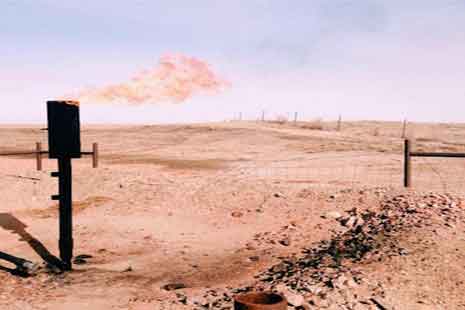On June 13, 2016, the Energy Information Administration blogged about North Dakota’s successful effort at reducing flaring from 36 percent to 10 percent in five years. Though North Dakota’s success should be applauded, it likely would not have happened as rapidly without the political pressure that was put on state officials by WORC member group Dakota Resource Council (DRC).
It wasn’t long ago, in 2012, that Western North Dakota was known as the least populated place that was visible from space. The reason North Dakota was visible from space was due to the wasteful practice of flaring natural gas at oil wells because the infrastructure to capture gas was not in place. Natural gas flaring is responsible for climate emissions and is known to affect the health of people and animals living near flares.
Legislative Efforts
DRC started its efforts to reduce flaring in North Dakota in 2011 after several farmers and ranchers living near oil and gas operations complained to DRC about the air quality produced by flares located near their homes.
To reduce the impacts of flaring DRC, along with allies, introduced bills at the North Dakota Legislature in 2011 and 2013. During both of these legislative sessions, DRC turned out people directly affected by flaring to testify in favor of DRC’s anti-flaring bills. Despite DRC’s efforts, the Legislature killed the four flaring bills supported by DRC and its allies.
Media Campaign Pressures Officials
Following the 2013 legislative session, DRC and allies waged a media campaign to pressure the state to put forth commonsense reforms to lower flaring. The media campaign included letters to the editor, opinion pieces, and national media.
The media campaign culminated when Dakota Resource Council members were featured two major national stories: “The Downside of the Boom” appeared on the front page of the New York Times, and “How oil and gas firms gained influence and transformed North Dakota” was published by the Center for Public Integrity.
The exposure produced by DRC’s media campaign proved too much for regulators and elected officials to ignore. In 2014 state oil and gas regulators proposed a policy to reduce flaring. DRC and several allies testified in favor of the new policy and offered other reforms. In the fall of 2014 North Dakota regulators enacted the North Dakota Flaring Policy, which aims to cut the percentage of gas flared from the peak of 36 percent all the way down to 10 percent by 2020.
The results
Presently the North Dakota flaring policy is working much faster than expected. As of March 2016 North Dakota oil and gas companies are only flaring 10 percent of their gas. This means the policy hit its goal four years ahead of time. Half of the policy’s success is due to low oil prices and less drilling, and the other half is due, in large part, to the pressure from DRC and allies on regulators and elected officials to adopt a flaring policy with teeth. Without pressure from DRC, in both the media and the legislature, North Dakota would likely not have addressed flaring so quickly and effectively. DRC members should feel proud of the work they did to ensure that Western North Dakota is now less visible from space than it was in 2012.

